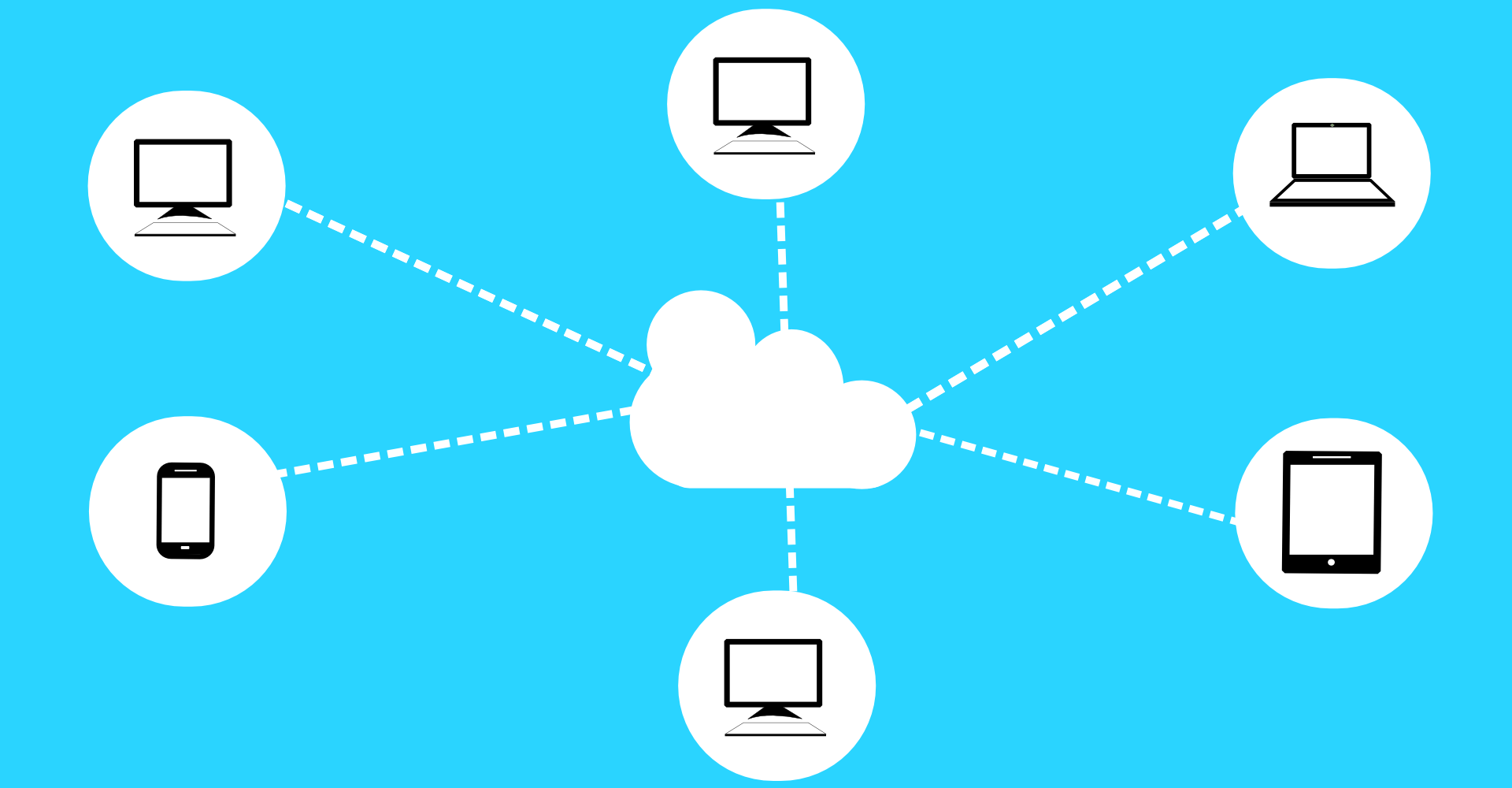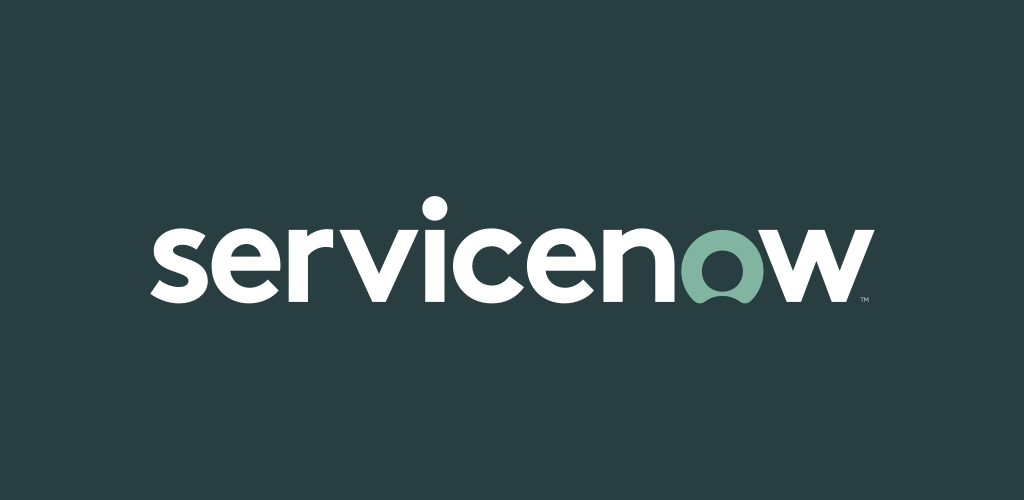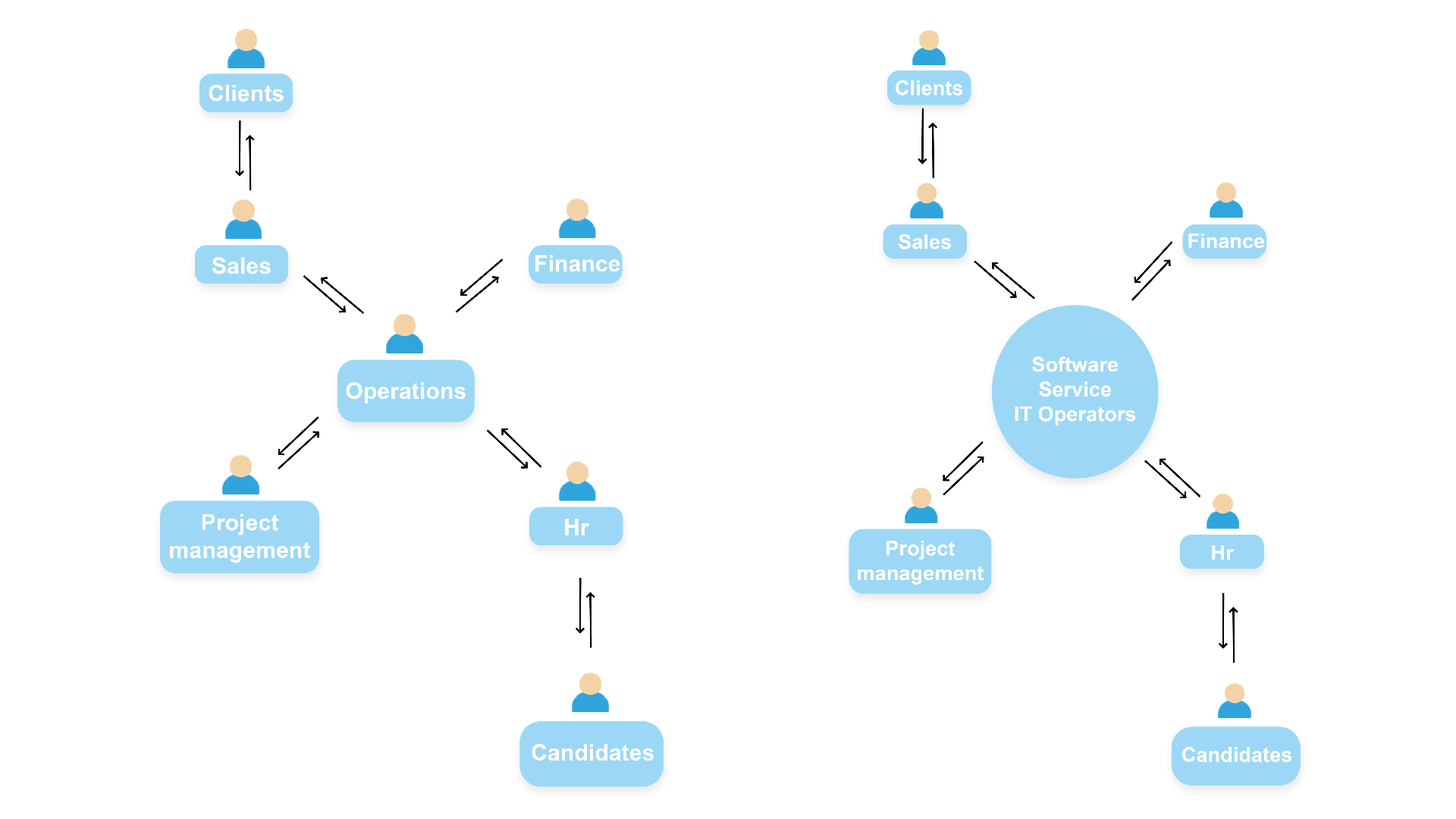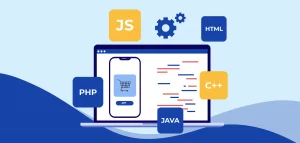Table of content
ServiceNow, an intriguing term that has been increasingly gaining popularity among IT professionals in the last couple of years. But, what is ServiceNow, what is ServiceNow development, why do you even need to know about it, and most importantly, how is it beneficial for you or your business?
This article is the ultimate introductory guide to ServiceNow. Here we will cover everything you need to know to start with ServiceNow development. But before we take a deep dive into ServiceNow, we need to brush up on some fundamentals to comprehend ServiceNow development and its concepts properly. Let’s begin at the beginning.
Since the advent of technology, the ways of commencing business have continuously been transforming into better ones. Remarkable developments and advancements in technology keep bringing paradigm shifts in the ways businesses operate.
One such remarkable innovation in computing technology that has transformed the face of the tech industry in the last two decades is cloud computing. In its most basic form, cloud computing is storing your data and applications on a remote system rather than your hard drive, and then accessing, utilizing, updating, and altering them through the internet. It is like owning a personal computer without having physical access to it.
The transition from the twentieth to the twenty-first century was a period in which the rate of technological advancement in the IT sector was unprecedented. It was also the period when the foundations of tech giants without which we can’t imagine our lives today like Google, Amazon, Netflix, etc. were laid. These were the companies that were willing to explore the potential of cloud computing.
The willingness of these companies to invest in the bleeding edge cloud computing technology has given them disproportionate returns in the last decade. Cloud computing has become one of the most successful and useful technologies of the current times.
One of the early movers in the business of cloud computing was ServiceNow. Fred Luddy founded Glidesoft Inc. in 2003. Later in 2007, the company’s name changed to ServiceNow.
Now that we have cleared up the basics of cloud computing and know the history of ServiceNow, we can proceed to develop an in-depth understanding of ServiceNow development. Let’s start finding answers to your questions like what is ServiceNow, what ServiceNow does, and most importantly what is in it for you and your business?
What is ServiceNow?
At its core, ServiceNow was developed as an advanced task management system that was and is used across several kinds of organizations to manage different types of business processes. It started in the ITSM sector (What is ITSM? We’ll get to it shortly) as a ticketing tool that simplifies the processes of logging, processing, handling, and resolving service requests across several areas of business. It makes the management of common business processes like incident management, change management, request management, problem management, and other services very easy. Now, however, ServiceNow has expanded and developed into so much more than just a ticketing tool. But before exploring its advanced capabilities, let us find answers to some basic questions you might have got in your mind.
What is ITSM?
ITSM stands for Information Technology Service Management which is simply a combination of people, technology, and processes that ensures the management and end-to-end delivery of IT service to customers. What that means is ITSM is a system that is used to simplify the delivery of IT services by digitizing the whole process, from the creation of a ticket to the final settlement of the issue. It includes everything in between like forwarding the ticket to the relevant person, keeping track of the service request, keeping the requester and concerned people updated with the status of the request, processing the request, settling it by providing an appropriate solution, keeping the record of tickets, etc.
What is a Ticket?
A ticket is a request logged on a work tracking system detailing an issue to address or a task to perform. Not to mention, we are talking about a support ticket here. In simple words, tickets or support tickets are nothing but a record of a request made by a person. The request can be regarding anything like getting a problem solved, getting something changed, reporting an incident, ordering something new, or any other situation that needs to be addressed. The ticket can be a digital record like one created on Google forms, or it can be created on a piece of paper like a physical form filled at a bank. Now, another question arises.
Why does a business need a digital ticket management system?
Suppose you own an organization or you’re about to start an organization, you know that there are many different kinds of processes involved in it. Some of the processes may involve customers, some may involve employees, and some may involve both. Consider the following situations:
- One of your customers is experiencing a problem with your product or service and they need assistance to get it resolved.
- An employee of your organization is having trouble working on their computer and needs it fixed.
- There is water leakage in one of the restrooms of your organization that needs fixing.
- A new joiner in the sales department of your organization needs a computer to work on.
- A sales associate of your organization needs their broken phone replaced.
Above are only a few of the numerous situations that can occur in a business that must be solved by following a series of steps. The proper way of solving any problem or situation in an organization is to start by making a traceable record for the issue and then get relevant personnel involved to look into the matter.
Now, what ways can you think of to carry out the above-mentioned process? There can be three kinds of solutions to choose from. You can carry out all the recording and forwarding of information on pen and paper, you can do it on Email, or you can have a dedicated application that satisfies all of your information management needs. Let’s discuss each of them briefly.
Pen & Paper
The traditional way that evolved first is to record everything on paper. A paper ticket can be given to the requesting person and all the records can be maintained in registers. This makes it easier to log requests and process them.
But, there are many disadvantages to the paper-based recording process. First and foremost it is very slow. Secondly, it is very time-consuming and requires a lot of manual labor. Thirdly, it is very hard to manage large amounts of physical records.
Keeping track of requests requires transferring physical records from one place to another. There is no centralized data storage, making processing and tracking requests even harder. Additionally, analyzing the written data is very hard and requires a lot of effort.
Email is another way of keeping a record of requests and tracking them. It has many advantages over the traditional pen and paper method. Email eliminates the need of recording data on paper, instead, stores all the data digitally. It makes logging and tracking data easier and faster. It enables faster communication. And it also makes the data easily accessible to concerned people.
But it still has many downsides to it. Processing requests is very inefficient and can be very time-consuming. There is no way for a requester to check the status of their request or track it. Transferring requests can be tiresome. And lack of accountability makes it unreliable.
Application
The third and the best way to manage your services is to use a dedicated application that is specifically designed for such business needs. There are numerous benefits of using a dedicated application for ITSM. It includes all the benefits of Email, but apart from that, it also provides you with ways of automating and standardizing the process. It makes recording, storing, processing, transferring, tracking, and managing all the parts of ITSM extremely easy, simple, fast, and efficient.
It has no such disadvantages as Email and Pen or Paper do. The only disadvantage can be that the application may not be able to cope up with increasing user expectations.
As have discussed the basics of ITSM, let us now understand what exactly ServiceNow does.
Which companies are using ServiceNow?
Thousands of organizations trust and rely on ServiceNow. Some of the renowned companies that use ServiceNow are Accenture, Adidas, Automic, Carlson, Equinor, Hitachi, Microsoft, etc.
What ServiceNow Does?
ServiceNow allows businesses to automate their ITSM processes by creating workflows. It offers a variety of applications that businesses can either use directly or build custom applications upon to develop workflows curated to their business needs. And the best part of ServiceNow is, it offers all of its services on the cloud, making it extremely easy, simple, and cost-effective for organizations to use.
But, what is a workflow?
A workflow is a set of repeatable steps performed sequentially over time which enables people and a system to achieve a goal. Workflows are not just limited to business processes you can observe workflows everywhere around you. For example, if you want to go watch a movie, there is a sequence of steps that you must follow to achieve the goal of watching a movie.
- Search online to find a list of movies that are in theatres at present.
- Select a movie that you want to watch.
- Book a ticket for the movie online. “OR”
- Book a ticket for the movie by going to the movie theatre by following steps 5 to 7.
- Wait until 2 hours before the movie
- Get dressed
- Get a Cab to the movie theatre. “OR”
- Get public transport to the movie theatre. “OR”
- Drive your vehicle to the movie theatre
- Reach movie theatre
- Get entry inside the movie hall
- Find your seat
- Watch the movie – Goal Accomplished
Similarly, business processes involve a sequence of repeatable steps that costs organizations a lot of time and money.
For example, consider the operations team of an IT company. The operations team has to act as a bridge between any two departments of a company. Departments like HR, Project Management, Sales need to communicate with each other in several instances, but they have to do it via the operations team. This process is very inefficient as it involves doing the same tasks again and again at different levels.
Digitizing these repeatable processes can save a lot of time for the operations department of your organization. ServiceNow helps you to create such digital workflows to improve the efficiency and growth of your organization.
By automating workflows, organizations improve productivity and improve by applying saved employees’ time to useful tasks.
And, what is cloud computing?
As mentioned earlier, cloud computing is simply using a remote system to store your data and applications, and utilizing and manipulating them over the internet. But it’s much more complicated than it seems. Service providers set up huge cyberinfrastructures to offer hardware and software resources to others.
The cloud infrastructure can be set up and offered in several deployment models like Public Cloud, Private Cloud, Community Cloud, and Hybrid Cloud, etc. Alternatively, cloud services are also offered in several service models. Let’s briefly discuss the three major cloud service models offered by the cloud service providers:
IaaS (Infrastructure as a Service):
IaaS refers to the part of cloud computing services that provide virtualized computing resources over the internet. In this model of cloud computing, the user has complete control over the hardware resources that the service provider offers.
In the IaaS model, the service provider manages Virtualization, Servers, Storage, and Networking. Whereas, the user has to manage Application, Data, Middleware, and Operating System.
PaaS (Platform as a Service):
PaaS refers to the part of cloud computing services that delivers a framework along with hardware upon which users can develop custom software from scratch. This model of cloud computing offers simplicity and flexibility to the users as they don’t need to worry about or maintain the Operating System, and they can still build their applications from scratch.
In the PaaS model, the service provider manages everything it does in the IaaS model but also manages Middleware and Operating systems. The user has to manage only applications and data.
SaaS (Software as a Service):
SaaS refers to the part of cloud computing services that provide pre-built third-party applications to the user. This model of cloud computing obliterates the need of developing, installing and maintaining the software. The user can access and use the application straight away over the internet.
In the SaaS model, the service provider manages every part of the system including the Application and Data. The user doesn’t have to worry about anything.

Why do you need ServiceNow?
Consider the following oversimplified example to understand the three models of cloud computing more clearly. Suppose you want to use a large and heavy application like Maya Autodesk, or any similar software that requires a powerful computer system to run, but your existing computer isn’t powerful enough to run the software. Naturally, you need another computer for the same.
For that, the first thing you need is hardware. If you went the traditional way, you’d first decide the hardware that is optimum for your current and future needs. Then after hardware comes software. You’ll decide which operating system will best suit your needs.
When you’ve finalized your hardware and software requirements, you’ll go and either purchase a pre-built computer system with your desired specification or purchase separate parts and software and get it assembled. If you get a system assembled then you will also need to install an Operating System.
Even after all this hassle, your solution may not be the best fit for your needs. Why? You may buy a system with very high specifications but never use it at its full potential. In that case, the extra resources may be redundant and the money spent on it would waste.
Another possibility is that a few months or years after purchasing the computer, your requirements for the computing resources increase drastically and the hardware and software of your computer no longer remain sufficient to serve your needs. For example:
- Your hard drive gets full and runs out of free space.
- The RAM of your computer isn’t sufficient to run new software.
- The processor of your computer isn’t fast enough to support the development of the new app you’re working on.
- A designing software gets corrupted on your computer and you can’t run it anymore even after reinstalling it.
- Your operating system corrupts and you can’t use your computer anymore
In such a case, you’ll either have to upgrade your computer or will have to buy a new one. It may be a lot of a hassle for you but still doable. But imagine the same situation on an organizational level. Suppose you own an enterprise where hundreds or even thousands of employees work. Naturally, an enterprise is an ever-changing and developing environment where it’s inevitable to encounter such situations frequently.
But as an organization, you can’t spend tons of money on redundant computing resources or frequent system upgrades and maintenance. And if it is a small organization, you may not even have enough capital to invest in setting up such high-end computing infrastructure.
This is where cloud computing comes in to solve your problem. Instead of purchasing the hardware and software resources at once, you can use cloud computing to use the same hardware and software resources and pay only as per your usage. And for that, you don’t need high-end cyberinfrastructure in your organization. You only need basic computers and fast internet connections.
When a service provider offers you hardware resources on lease and delivers it to you over the internet, then it is Infrastructure as a Service (IaaS). It is like getting partial access to your friend’s computer without physically bringing it to your place, rather, using it over the internet. You can install your desired operating system on it. You can install your desired software on it. You can use it as per your requirements, and then return the access when your work is complete.
When a service provider offers you an operating system installed on the hardware and delivers it to you over the internet, then called Platform as a Service (PaaS). It is like getting complete access to your friend’s computer without physically bringing it to your place, rather, using it over the internet. But rather than installing your copy of an operating system, you use the OS that is already installed on their computer. You can install your desired software on it. You can use it as per your requirements, and then return the access when your work is complete.
When a service provider offers you software to use and delivers it over the internet, then it is Software as a Service (SaaS). It is like getting access to software installed on your friend’s computer without physically bringing it to your place. You can use the software as per your requirements, and then return the access when your work is complete.
The benefit of cloud computing is you only need to pay for the resources and time you use the services. And, you can increase or decrease the number of resources in use dynamically according to your needs.
What cloud computing services does ServiceNow offer?
ServiceNow started as SaaS in the ITSM sector, but now it has expanded into several other sectors as well. Now, ServiceNow provides services in two of the three cloud deployment models i.e. PaaS and SaaS. ServiceNow does not provide IaaS services, but it does support integration with Microsoft Azure.
ServiceNow PaaS services allow organizations to manage entire organization’s business processes with a single system of record. With centralized storage, organizations can manage processes of different areas of business easily.
What are the key Features and Services of ServiceNow?
ServiceNow offers over 120 products and solutions for businesses of all sizes. It allows organizations to create connected and cross-functional workflows across several verticals of a business. The most popular workflow solutions offered by ServiceNow are:
- IT Workflows
- Employee Workflows
- Creator Workflows
- Customer Workflows
Several out-of-the-box products are offered under each of these solutions. These products can directly be used as applications or they can be used as a base to build custom applications upon. Let’s briefly discuss some of the most popular products under each of the categories mentioned above.
In today’s world, IT has become an integral part of almost every kind of business. As the usage of IT services increases, so does the need for management of IT services. It can be extremely cumbersome to manage these services in the Pen & Paper or the Email way. Having a dedicated application to manage the IT workflows of your organization can help you make your organization’s agility go through the roof.
ServiceNow does just that for you. It offers several applications that are curated to handle specific segments of your IT work processes. And all these applications can be interfused with each other allowing you to create cross-functional workflows. Following are a few of the products ServiceNow offers to cater to your IT services management needs.
- IT Service Management (ITSM)
- IT Operations Management
- IT Business Management
- IT Asset Management
- DevOps
An organization can’t sustain itself without good employees, and employees can’t be good without a good work environment. Keeping your employees on the right track is a necessity for the success of any organization, but it is easier said than done. Numerous situations can hinder the performance of your employees.
Organizations need a system to provide their employees with a seamless working experience. Whether it is to create a system for communication between employees of different departments, simplify HR services and operations, or address and solve their problems, you need to create a smooth working experience for your employees, and ServiceNow has got all your needs covered.
ServiceNow offers a range of solutions to create a healthy, productive, and efficient work environment for your employees. Mentioned below are some of the products that ServiceNow offers which allow you to create agile employee workflows:
- HR Service Delivery
- Workplace Service Delivery
- Legal Service Delivery
- Procurement Service Management
- Safe Workplace Suite
The popularity of AppDev platforms has increased dramatically in recent years. The popularity can be attributed to the cost efficiency and requirement satisfaction these platforms provide to non-tech users. Over 90% of people want unified platforms for their organizational needs, yet it’s very hard to find the right solution in the market.
ServiceNow creator workflows products give you the liberty to create robust, centralized applications on a single platform that fit all your needs, without having to write a single line of code. You can also develop complex custom-coded applications upon the applications built from no-code tools on the same platform. And its AI-powered tools make research, analysis, and development extremely easy and efficient for organizations. Some of the Creator Workflows tools that ServiceNow offers are:
- App Engine
- Integration Hub
- Manufacturing Connected Workforce
- ServiceNow App Store
As Jeff Bezos says, the customer is the king, and it indeed is true for any business. Building customers’ trust, loyalty, and getting customer retention are integral parts of running a successful business.
Modern CRM tools allow you to build great relationships with your customers. But ServiceNow takes your customer relationships to the next level. ServiceNow customer workflows products help you manage your clients efficiently and provide them with your best services. Some of the customer workflows products that ServiceNow offers are:
- Customer Service Management
- Field Service Management
- Connected Operations
- Financial Services Operations
- Telecommunications Service Management
How to get started with ServiceNow right now?
If you want to explore the ServiceNow platform by yourself, test its capabilities, and see what’s really in it for you, then you can get started right away by creating a Personal Developer Instance (PDI).
As its name suggests, a PDI is an instance of the ServiceNow platform that allows you to explore the platform from the inside. You can test all the functionalities, develop apps and run them in test mode.
If you’re a developer then you can explore your PDI with a full-fledged IDE-based experience. And if you’re not a technical person, then you can choose to explore the platform in a UI-based experience.
And you can do all the testing and development for free. However, a PDI is only for testing purposes, you cannot move a test application to the production environment.
What is the cost of ServiceNow?
ServiceNow offers a flexible pricing model. Its cost depends on various factors like type, size, and geographical location of your organization. The total cost will depend on the services you opt for. You can get a custom quote for your requirements by contacting the ServiceNow sales team from their website.
Conclusion
So, if you are looking to automate your business processes, save your organization’s money and employees’ time then ServiceNow is the best option for you. It has been in the industry for a long time and built its brand by providing quality service. It is trusted by the biggest of the brands. And, the ServiceNow team is consistently innovating and curating new ideas to make their service better and better every day.
If you want to pace up your company’s growth, raise employee agility and make your business process simple and efficient, then look no further than ServiceNow.
Frequently Asked Questions (FAQs)
What is ServiceNow?
ServiceNow is a service management platform that provides various cloud-based services to organizations for the management of their services in different sectors. It allows businesses to create digitized workflows for repeatable processes and help them save time and money and increase their productivity.
What is Workflow?
A workflow is a sequence of repeatable steps involved in business processes carried out to achieve specific goals.
What is ITSM?
Information Technology Service Management (ITSM) is a combined set of people, processes, and technology deployed to design, plan, build, operate, and deliver information technology services offered to customers and employees.








